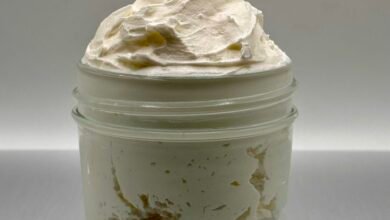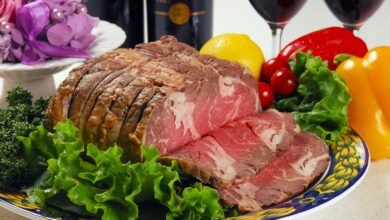How to Cook Jasmine Rice Perfectly Every Time
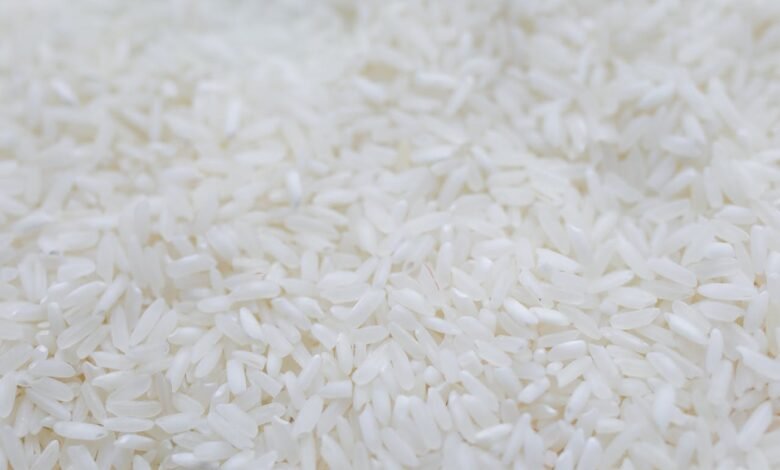
To cook jasmine rice, rinse rice, combine with water, boil, then simmer covered for 15 minutes. Fluff before serving.
Jasmine rice, known for its fragrant aroma and slightly sticky texture, is a popular choice for many dishes. Cooking this type of rice to perfection may seem daunting, but with the right technique, you can achieve fluffy and flavorful jasmine rice every time.
In this guide, we will walk you through the step-by-step process of cooking jasmine rice to help you master this versatile and delicious staple in Asian cuisine. Whether you’re a seasoned home cook or a beginner in the kitchen, learning how to cook jasmine rice will elevate your meals and impress your family and friends.
Introduction To Jasmine Rice
Discover the art of cooking fragrant jasmine rice for a delightful dining experience. Rinse the rice, add water in a 1:1. 5 ratio, and simmer for 15-20 minutes until tender. Let it rest for 5 minutes, then fluff with a fork for perfect, fluffy jasmine rice every time.
If you’re a lover of Asian cuisine, then you must be familiar with Jasmine Rice. It is a fragrant and delicate variety of long-grain rice that originated from Thailand. Jasmine Rice is known for its subtle aroma and flavor, and it is a perfect accompaniment to curries, stir-fries, and other Asian dishes. In this article, we’ll explore the origins and characteristics of Jasmine Rice and why perfect cooking matters.
Origins And Characteristics
Jasmine Rice is native to Thailand and is also known as Thai fragrant rice. It is a long-grain rice that has a soft and fluffy texture when cooked. The rice has a slightly sweet and floral aroma, which is why it is called Jasmine Rice. It is grown in Thailand, Cambodia, Laos, and Vietnam, and it is considered a staple food in these countries. Jasmine Rice is also popular in other parts of the world due to its unique taste and aroma.
Why Perfect Cooking Matters
Perfect cooking of Jasmine Rice is crucial to ensure that you get the best flavor and texture. Undercooked or overcooked rice can ruin the taste and texture of the dish. Overcooked rice becomes mushy, and undercooked rice is hard and crunchy, which is not pleasant to eat. The perfect cooking method for Jasmine Rice involves soaking the rice for at least 30 minutes, using the right amount of water, and cooking it on low heat. This will give you perfectly cooked rice that is fluffy and fragrant. In conclusion, Jasmine Rice is a staple food in many Asian countries, and it is beloved for its delicate flavor and aroma. Perfect cooking is crucial to ensure that you get the best taste and texture. So, the next time you cook Jasmine Rice, make sure to follow the right method to get the perfect results.
:max_bytes(150000):strip_icc()/how-to-make-jasmine-rice-3217510-ADD-V1-BIG-FINAL-V2-6ad75cb18e604ae486f113e1d1c356dd.png)
Credit: www.thespruceeats.com
Selecting Quality Jasmine Rice
When it comes to cooking delicious jasmine rice, selecting the right quality of grains is crucial. The quality of the rice you choose will directly impact the taste, texture, and overall satisfaction of your dish. In this section, we will explore some helpful tips for choosing the best grains of jasmine rice and discuss the difference between white and brown varieties.
Tips For Choosing The Best Grains
When selecting jasmine rice, keep the following tips in mind:
- Look for a reputable brand: Choose a well-known and trusted brand to ensure the quality and authenticity of the rice.
- Check the appearance: Inspect the grains for any signs of damage, discoloration, or impurities. High-quality jasmine rice should have a uniform, pearly white color.
- Consider the fragrance: Jasmine rice is known for its pleasant aroma. Smell the rice to ensure it has a fragrant and floral scent. Avoid rice with any strange or unpleasant odors.
- Read the packaging: Pay attention to the packaging labels, including the country of origin and any certifications for organic or sustainable farming practices.
- Opt for long-grain rice: Choose jasmine rice that has long, slender grains. This type of rice tends to be more aromatic and fluffier when cooked.
White Vs. Brown Jasmine Rice
While both white and brown jasmine rice come from the same plant, there are some notable differences between the two:
| White Jasmine Rice | Brown Jasmine Rice |
|---|---|
| Highly refined and polished | Less processed with the bran and germ intact |
| Mild and delicate flavor | Nutty and slightly chewy texture |
| Cooks faster | Requires a longer cooking time |
| Suitable for various dishes, including stir-fries and curries | Offers more nutritional value and fiber |
Consider your personal preference and the specific recipe you are preparing when choosing between white and brown jasmine rice. Both varieties have their own unique characteristics and can enhance your culinary experience in different ways.
Preparation Before Cooking
Before you embark on the journey of cooking delicious jasmine rice, it is essential to prepare it properly. The preparation process involves two crucial steps: rinsing and soaking. These steps not only help remove excess starch but also enhance the texture and flavor of the cooked rice. Let’s explore each step in detail:
Rinsing: The Crucial First Step
Rinsing jasmine rice is a vital initial step that should never be skipped. This process helps eliminate any dust, debris, or impurities that may be present on the rice grains. Additionally, rinsing removes excess surface starch, resulting in fluffier and non-sticky rice once cooked.
To rinse jasmine rice, follow these simple steps:
- Place the desired amount of rice in a fine-mesh sieve or colander.
- Hold the sieve under cold running water.
- Gently swish the rice around with your fingers, allowing the water to flow through the grains.
- Continue rinsing until the water runs clear, indicating that the rice is clean and free from impurities.
Once the rice is thoroughly rinsed, you are ready to move on to the next step: soaking.
Soaking: Enhancing Texture And Flavor
Soaking jasmine rice before cooking can significantly improve its texture and flavor. This step allows the rice grains to absorb water, resulting in a softer and more evenly cooked final product. Soaking also helps reduce the cooking time, allowing you to enjoy perfectly cooked rice in less time.
Follow these simple instructions to soak jasmine rice:
- Place the rinsed rice in a bowl or pot.
- Add enough cold water to cover the rice completely.
- Let the rice soak for at least 30 minutes, but you can extend the soaking time up to several hours for even better results.
Once the soaking time is complete, drain the soaked rice and proceed with your chosen cooking method.
By diligently following the rinsing and soaking steps, you will ensure that your jasmine rice turns out perfectly cooked, fluffy, and bursting with delightful flavor. Now that you have completed the preparation process, you are ready to move on to the exciting part: cooking the jasmine rice!
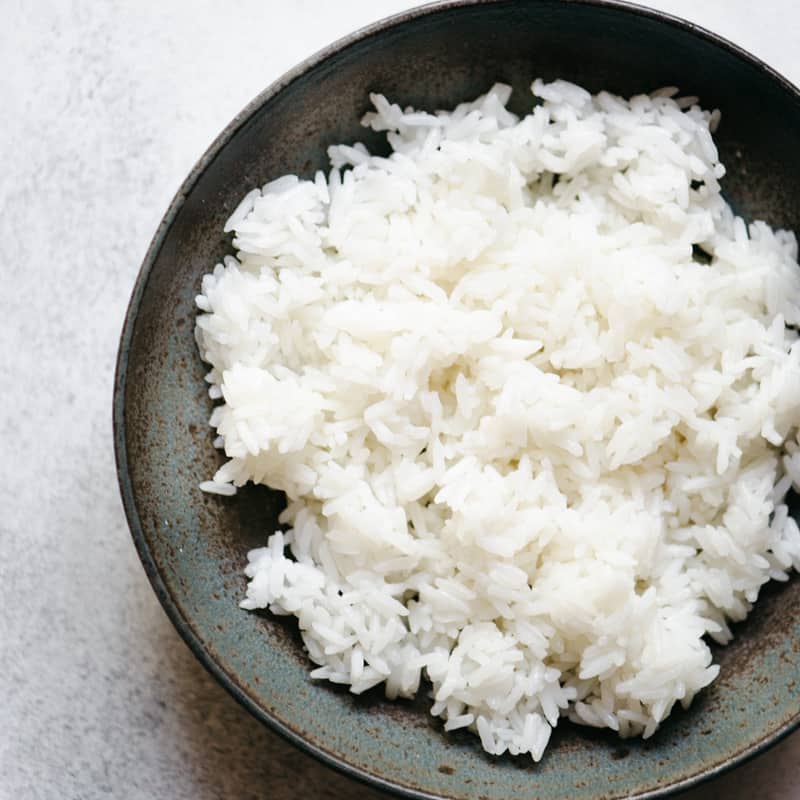
Credit: healthynibblesandbits.com
Cooking Methods Explored
When it comes to cooking jasmine rice, there are two primary methods that can help you achieve perfectly cooked, fluffy grains every time. Whether you prefer the simplicity of stovetop cooking or the convenience of a rice cooker, we’ve got you covered. Let’s explore these cooking methods in more detail:
Stovetop Simplicity
If you’re looking for a straightforward and hands-on approach to cooking jasmine rice, the stovetop method is the way to go. Here’s a step-by-step guide to help you achieve rice that’s cooked to perfection:
- Start by rinsing the rice under cold water to remove any excess starch.
- In a medium-sized saucepan, combine one cup of jasmine rice with one and a half cups of water.
- Bring the water to a boil over medium-high heat.
- Once boiling, reduce the heat to low and cover the saucepan with a tight-fitting lid.
- Let the rice simmer for about 15-20 minutes, or until all the water has been absorbed.
- Remove the saucepan from the heat and let it sit, covered, for an additional 5 minutes to allow the rice to steam.
- After the steaming process, fluff the rice gently with a fork to separate the grains.
With this stovetop method, you’ll be able to enjoy the natural aroma and delicate flavor of jasmine rice.
Rice Cooker Perfection
If you prefer a hands-off approach and want foolproof results every time, a rice cooker is your best friend. Here’s how you can achieve perfectly cooked jasmine rice using a rice cooker:
- Start by rinsing the rice under cold water until the water runs clear.
- Transfer the rinsed rice to the rice cooker’s inner pot.
- Add the appropriate amount of water according to the rice cooker’s instructions. Typically, the ratio is 1:1 for jasmine rice.
- Close the lid of the rice cooker and select the appropriate cooking setting.
- Allow the rice cooker to work its magic and automatically switch to the “keep warm” mode once the rice is cooked.
- Let the rice sit in the rice cooker for about 5-10 minutes before fluffing it with a fork.
With a rice cooker, you can enjoy perfectly cooked jasmine rice without any guesswork. It’s a convenient and time-saving method that guarantees consistent results.
Water To Rice Ratio
Jasmine rice is a fragrant, long-grain variety known for its delicate aroma and slightly sticky texture when cooked. Achieving the perfect water to rice ratio is essential to ensure fluffy, perfectly cooked jasmine rice. This crucial ratio determines the texture and consistency of the cooked rice, making it an important factor to consider when preparing this popular grain.
Measuring For Fluffy Results
To achieve fluffy jasmine rice, it’s important to use the correct water to rice ratio. A general rule of thumb is to use a 1:1.5 ratio of rice to water. This means for every cup of jasmine rice, use 1.5 cups of water. However, slight adjustments may be necessary based on personal preference and environmental factors such as altitude.
Adjustments For Altitude And Texture Preferences
Altitude can affect the cooking process, requiring slight modifications to the water to rice ratio. At higher altitudes, it’s recommended to increase the amount of water to compensate for the lower boiling point. For those who prefer a softer or stickier texture, adding a bit more water can help achieve the desired consistency.
The Art Of Simmering
The Art of Simmering is a crucial element in achieving perfectly cooked jasmine rice. Simmering involves maintaining a gentle and steady heat to ensure the rice cooks evenly and absorbs the right amount of moisture. Let’s delve into the specifics of simmering that will elevate your jasmine rice to a whole new level.
Lid On Or Off?
During the initial stages of simmering, it’s essential to keep the lid on the pot to trap the steam and facilitate the absorption of water by the rice. This helps in achieving the ideal texture and flavor. Once the rice has absorbed most of the water and is nearly cooked, removing the lid allows any excess moisture to evaporate, preventing the rice from becoming mushy.
Timing And Heat Management
Timing is crucial when simmering jasmine rice. Once the water comes to a boil, reduce the heat to maintain a gentle simmer. This prevents the rice from sticking to the bottom of the pot and ensures that it cooks uniformly. The typical simmering time for jasmine rice is around 15-20 minutes. It’s important to monitor the heat level throughout the process to avoid undercooking or overcooking the rice.
Post-cooking Techniques
After cooking jasmine rice to fluffy perfection, the post-cooking techniques are crucial for achieving the ideal texture and taste. Mastering the art of resting and fluffing can elevate your jasmine rice dish to a whole new level.
Resting: The Secret To Separation
Allowing the cooked jasmine rice to rest for 5-10 minutes post-cooking is essential. This resting period helps in separating the grains and ensures a light and fluffy texture.
Fluffing: A Gentle Finishing Touch
Gently fluffing the jasmine rice with a fork post-resting is key. This process helps to separate any clumped grains and enhances the overall lightness of the rice.
Troubleshooting Common Pitfalls
When cooking jasmine rice, it’s essential to be mindful of common pitfalls that can affect the final outcome. By understanding how to address these issues, you can ensure a perfect batch of fluffy and aromatic rice every time.
Avoiding Mushiness And Clumping
To prevent mushy or clumpy jasmine rice, make sure to rinse it thoroughly before cooking. This helps remove excess starch that can cause the grains to stick together. Additionally, using the right ratio of water to rice and avoiding lifting the lid during cooking can help maintain the ideal texture.
Dealing With Undercooked Or Burnt Grains
If your jasmine rice turns out undercooked, add a bit of extra water and continue cooking until the grains are tender. On the other hand, if you notice burnt grains at the bottom of the pot, gently scrape off the top layer of rice to salvage the rest without compromising the flavor.
Advanced Tips And Variations
Enhance your Jasmine Rice cooking skills with these expert tips and unique twists to elevate your dishes.
Infusing Flavors Into Jasmine Rice
Transform your Jasmine Rice by adding aromatic herbs or spices during cooking for a flavorful kick.
Creative Leftover Ideas
Revamp leftover Jasmine Rice into tasty fried rice or refreshing rice salad for a delicious meal.
Pairing Jasmine Rice With Dishes
Enhance your meals by pairing fragrant jasmine rice with a variety of dishes. To cook jasmine rice perfectly, rinse it before cooking and use a 1:1 water ratio. The fluffy texture and delicate aroma of jasmine rice complement both savory and sweet dishes.
Cultural Combinations
Pairing Jasmine rice with dishes from various cultures enhances your dining experience.
Balancing Flavors And Textures
Pair Jasmine rice with dishes that balance flavors and textures for a satisfying meal.
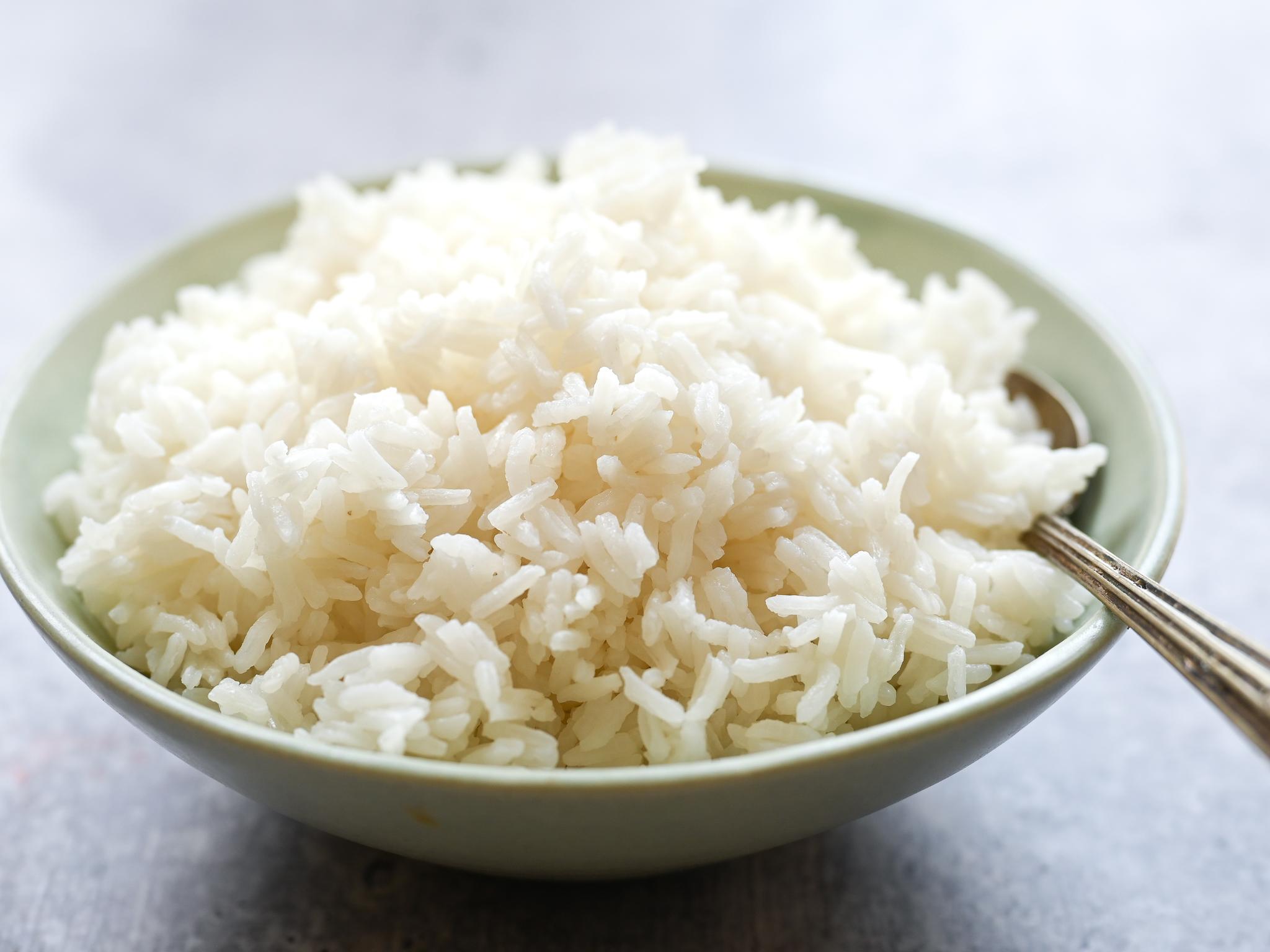
Credit: www.onceuponachef.com
Frequently Asked Questions
How Long Does It Take To Cook Jasmine Rice?
Jasmine rice usually takes around 15-20 minutes to cook. It’s important to follow the instructions on the packaging for the best results.
What Is The Ideal Water-to-rice Ratio For Cooking Jasmine Rice?
The ideal water-to-rice ratio for cooking Jasmine rice is 1:1. 5. This means for every cup of rice, you should use 1. 5 cups of water.
Can Jasmine Rice Be Cooked In A Rice Cooker?
Yes, Jasmine rice can be easily cooked in a rice cooker. Simply follow the rice cooker’s instructions for the perfect fluffy rice.
How Can I Enhance The Flavor Of Jasmine Rice?
To enhance the flavor of Jasmine rice, consider using broth instead of water, adding a knob of butter, or tossing in some fresh herbs like cilantro or parsley.
Conclusion
To sum up, cooking jasmine rice is not as difficult as it may seem at first glance. With the right ratio of water, a good pot, and a few tips and tricks, you can achieve perfectly fluffy and fragrant rice every time.
Whether you prefer to cook it on the stove or in a rice cooker, the key is to avoid lifting the lid during cooking and to let it rest for a few minutes before serving. With these simple steps, you’ll be able to enjoy delicious jasmine rice dishes in no time.
